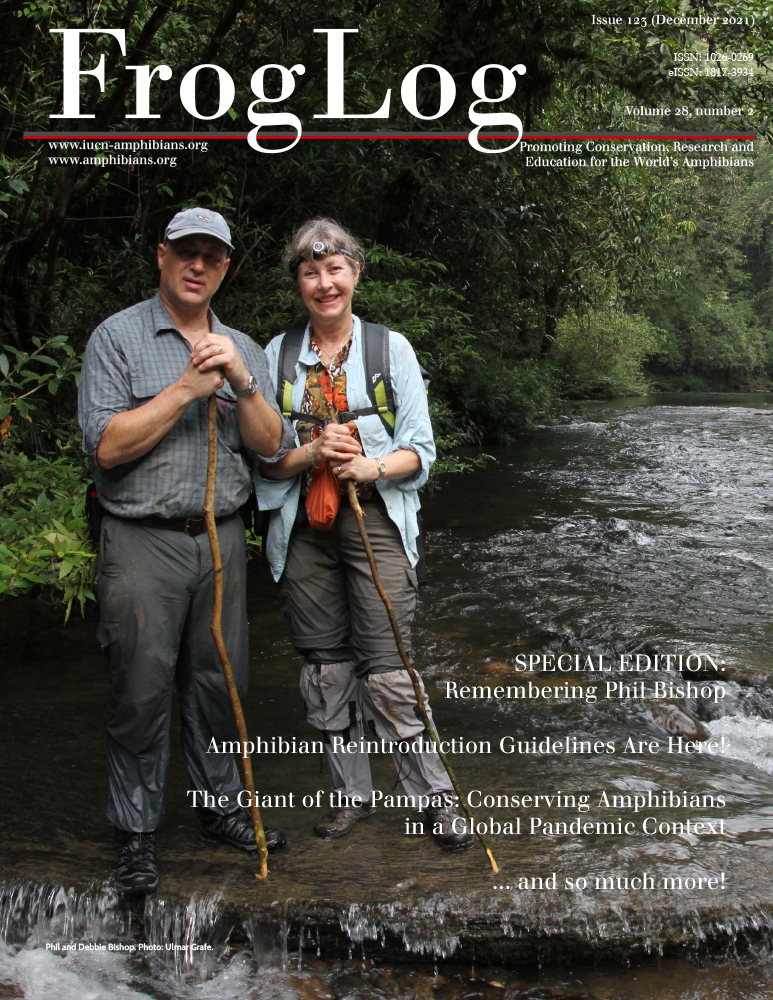The Amphibian Survival Alliance (ASA) and the Amphibian Specialist Group (ASG) are very pleased to announce a special issue of FrogLog dedicated to someone who is near and dear to our hearts: Phil Bishop. As you may know, Phil passed away early this year, leaving an enormous gap in amphibian conservation and an equally large hole in our hearts. This special issue is our way to pay tribute to an extraordinary man, someone who inspired all who met him and who led by example. The experiences and stories collated in this special issue’s pages are a testament to Phil’s character and to how much he was – and still is – loved. This special issue also resumes the format of having ASA News, ASG News and News from the Amphibian Conservation Community under one publication. We invite you to browse through these sections to find out the latest news in the amphibian conservation world. Leer más.














